Recent Articles
Popular Makes
Body Types
10 of the Best Used Small SUVs

2018 Toyota Rav4 blue ・ Photo by Toyota
We know why you're here. Like the majority of American buyers these days, you have decided that an SUV is very likely going to be your next ride of choice versus a sedan, hatchback, or station wagon. But having viewed the prices of a brand-new small SUV, you have rightly determined that looking at a used version could be a very intelligent alternative. We're here to tell you it is. In this list, we concentrated on 2017 model year vehicles, because they are old enough to be significantly less expensive than new ones while still offering plenty of modern features and useful life. (Slightly older and slightly newer versions will do the same.) The models we’re going to lay out the prime benefits small SUVs deliver — an elevated driving position, plenty of interior space, driving comfort, and exceptional versatility. While SUVs used to also present some negatives, those have essentially been engineered out, so we are confident in presenting this list of 10 of the best used small SUVs.
2017 Mazda CX-5
The Mazda CX-5 is widely regarded as the cream of the compact SUVs from a driver's point of view. In a segment that isn't traditionally known for driving fun, it is the most responsive and best-handling of the major players. At the same time, it also gets high marks for its interior, which channels those of the best European crossovers such as the Audi Q5. All of these attributes, which are still the case on new CX-5s, were and are the case on used versions like the 2017-vintage we discuss here. It uses a 187-horsepower 2.5-liter four-cylinder engine backed up by a six-speed automatic transmission. The CX-5 can be purchased with front-wheel drive or all-wheel drive, and there's no reason to shy away from the less-expensive front-drive versions.
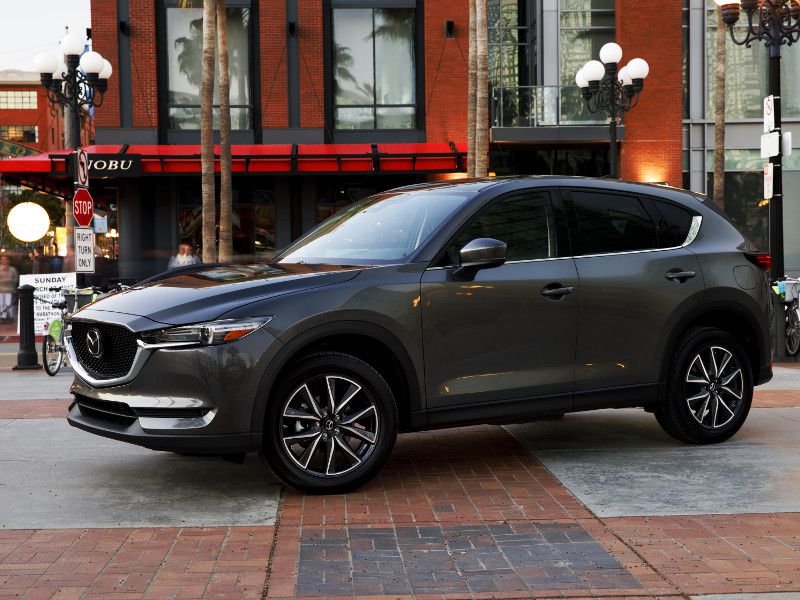
Photo by Mazda USA
2017 Honda CR-V
The Honda CR-V helped lead the crossover parade, and today they are everywhere. That's good news if you plan to buy one used. A lightly used CR-V is one of the most versatile and useful vehicles you can buy for less than $25,000. The five-passenger compact SUV boasts a premium-quality interior, an available turbocharged engine, and a laundry list of safety features in the Honda Sensing suite of advanced driver-assist technologies — including road-departure mitigation and adaptive cruise control. All but the base LX models use a 190-horsepower 1.5-liter turbocharged four-cylinder engine, while the LX has a 184-horsepower 2.4-liter direct-injected i-VTEC four-cylinder engine. That might be the best bet for those seeking less-expensive transport with all the room and comfort of the CR-V's pleasant interior.
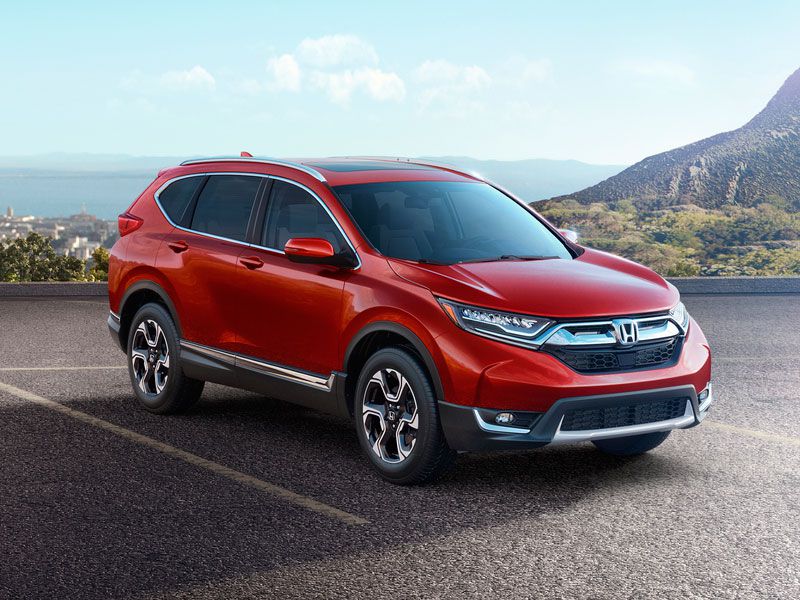
Photo by Honda
2017 Toyota RAV4
While the Honda CR-V has long been a crowd favorite, in 2017, its close rival, the Toyota RAV4 not only exceeded the CR-V's sales performance, but it was also the bestselling non-pickup truck in the country. Early on, the RAV4 was spartan and truck-like, but that changed as Toyota brought the SUV more in line with the CR-V. These days it is easy to drive due to its great visibility from the driver's seat and its compact overall length. There is a lot to like about this generation of the RAV4 that is available a front- or all-wheel drive. It's powered by a stalwart 176-horsepower 2.5-liter four-cylinder engine backed by a robust six-speed automatic transmission. In 2017 form, the RAV4 boasts an impressive array of standard equipment, including roof rails, a backup camera, Bluetooth/USB integration, and a 6-inch touchscreen-operated audio system.

Photo by Toyota
2017 Nissan Rogue
The Nissan Rogue is another hot-seller in the segment, giving it good potential as a high-value used small SUV. One differentiator is the Rogue offers exceptional passenger and cargo flexibility with its innovative EZ Flex seating and Divide-N-Hide cargo system. Nissan has made its ProPILOT Assist technology that aids steering, braking, and even acceleration during single-lane highway driving available on many of the Rogue models. All 2017 Rogues are equipped with a 170-horsepower 2.5-liter four-cylinder engine mated to the Xtronic continuously variable transmission (CVT) with Sport and Eco modes. The CVT boosts fuel economy (the EPA estimates 26 mpg city/33 mpg highway/29 mpg combined) but it offers a little different driving feel than a conventional "geared" automatic transmission. Inside, the Rogue has a well-designed interior, but for Apple CarPlay and Android Auto, you'll need to pay extra for a 2018 model.
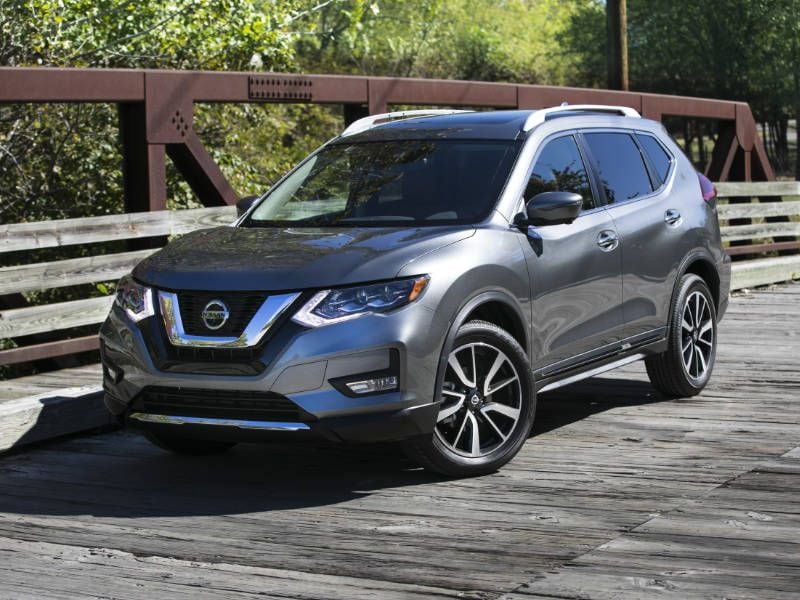
Photo by Nissan
2017 Subaru Crosstrek
The versatile Subaru Crosstrek is one of the smallest and most car-like vehicles on this list. It might not have the size to suit everyone's needs, but it can seat four comfortably and also serve as a commuter car. One basic all Crosstreks have is all-wheel drive, and the full-time system is exceptionally valuable in inclement weather in addition to enabling mid-level off-roading. Among the other features are remote entry, a 6.5-inch touchscreen, Bluetooth/USB/smartphone integration, split/folding rear seating, and parking camera. The Crosstrek’s 148-horsepower 2.0-liter horizontally opposed four-cylinder engine is teamed with a continuously variable automatic transmission that can simulate gear shifts, and a manual transmission is also available. Subarus are known for their safety equipment, and the Crosstrek is no exception. Those transitioning from a small car or hatchback will find it familiar and easy to drive.
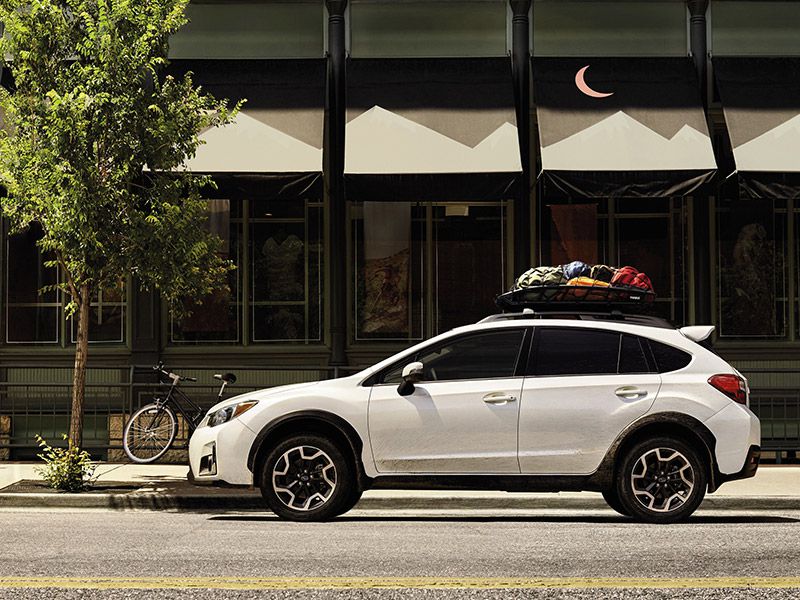
Photo by Subaru
2017 Kia Sportage
The Kia Sportage is, like the Crosstrek, one of the smaller of the vehicles on this list but certainly a useful and versatile one. Kia has long had one of the best warranties in the industry, but in recent years its product quality has also zoomed to the top of the pack. Recent model-year versions of this compact five-passenger crossover feature a laundry list of standard features you might pay extra for elsewhere. Its 181-horsepower 2.4-liter four-cylinder engine provides plenty of acceleration, but if you'd like more, a 240-horsepower turbocharged 2.0-liter four-cylinder engine is available too in both front- and all-wheel-drive. When it comes to safety, the Sportage offers five-star National Highway Traffic Safety Administration crash test ratings. For a short-wheelbase SUV, it also offers a comfortable ride.

Photo by Kia
2017 Ford Escape
With three 2017 model-year trim levels from which to choose, you are likely to find a Ford Escape to suit your tastes and budget. The compact Escape competes directly with Honda CR-V and Nissan Rogue. While the Titanium version is the "hot-rod" of the segment, the base engine is a 168-horsepower 2.5-liter four-cylinder. The engineering is on-road-oriented, but all-wheel-drive and a choice of two turbocharged engines can spice things up. In particular, the turbocharged EcoBoost 2.0-liter four-cylinder with 245 horsepower transforms the character of the tidy crossover. The base model lacks alloy wheels, but other equipment, like a tilt/telescoping steering wheel, automatic headlights, LED tail lights, split-folding/reclining rear seats, and Bluetooth/smartphone integration, are often included on used versions in the market. For a splurge, you might look at the top-of-the-line Escape Titanium. It features the 2.0-liter engine, navigation system, enhanced active park assist, and high-intensity discharge headlights.
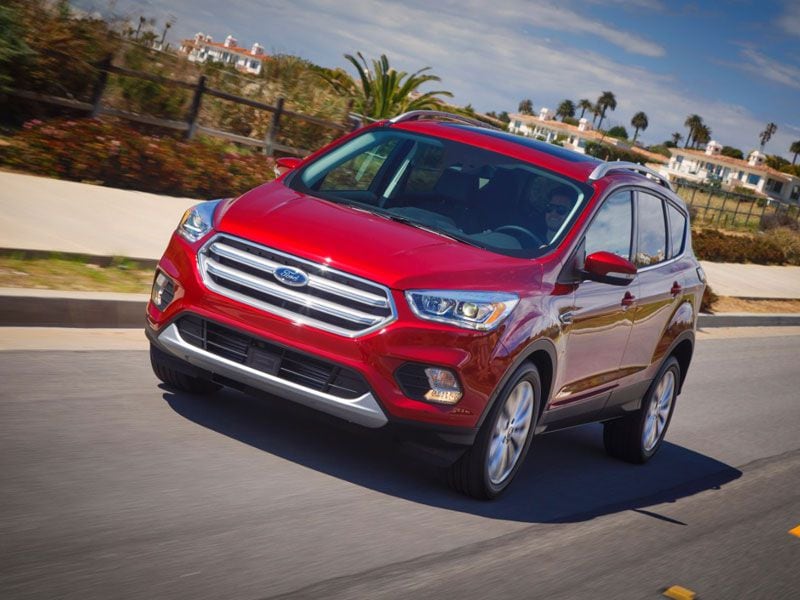
Photo by Ford
2017 Chevrolet Trax
The Chevrolet Trax crossover is the smallest vehicle on this list, and because of that it could be a great choice if you're an urban-dweller who has to park on the street. The Trax's modest footprint is accompanied by a tall roofline, which makes packing people and their stuff easier than you might think. The Trax is powered by a turbocharged 138-horsepower 1.4-liter four-cylinder flowing its power through a six-speed automatic transmission. For the 2017 model year, the Trax was offered in three trim levels — LS, LT, and Premier — in both front-drive and all-wheel drive. From a look at it, you might guess the interior is a bit confined, but it is actually very comfortable for the two in front while putting two adults in the back isn't a stretch either. As a low-cost choice in this fine group, the Trax could serve you well.
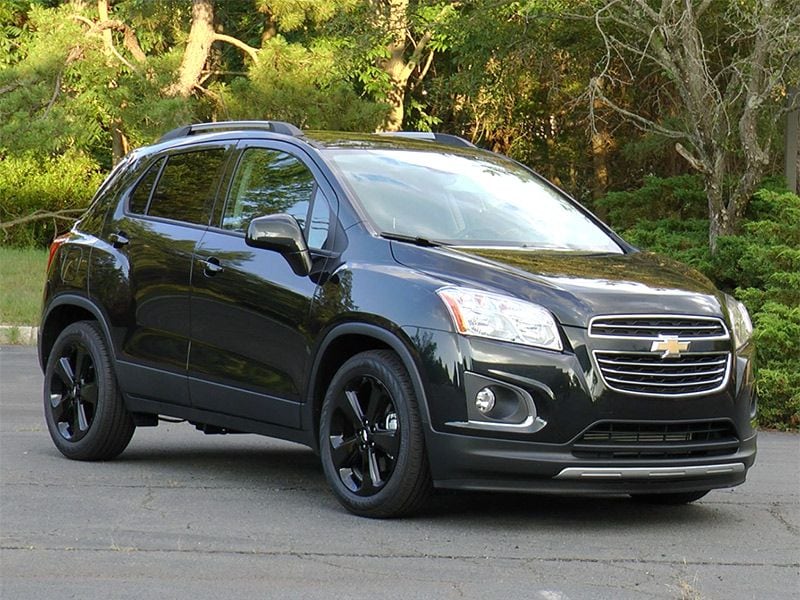
Photo by Dan Gray
2017 Hyundai Tucson
An inch longer than the Subaru Crosstrek and 4.4 inches shorter than the Honda CR-V, the Hyundai Tucson is a handy size for those in the urbs and suburbs. It was named the most dependable small SUV by J.D. Power in a recent Vehicle Dependability Study, and that's an indication that the Tucson is gaining a justified reputation for longevity. For 2017, two engines were available: a 175-horsepower 1.6-liter turbocharged direct-injected four-cylinder and 164-horsepower 2.0-liter, direct-injected four-cylinder. For overall cost-of-ownership sake, we'd choose the base engine over the turbo. If you're into phone connectivity, be aware that some trim levels that year offered Android Auto and Apple CarPlay, while others didn't. The Tucson’s interior is nicely finished and typically well-screwed-together with easy-to-use infotainment. It is certainly a solid choice among the contenders.

Photo by Hyundai
2017 Jeep Compass
Jeep Brand comes at the small SUV market with several offerings — the subcompact Renegade, compact Cherokee, and in-between Compass. A good-looking five-passenger SUV, the Compass draws a bit less liberally on its Jeep heritage than some vehicles in the brand’s lineup. More so that the Cherokee, it tends toward a bit tall and stubby, which in a cargo-carrying sense is a good thing. The then-all-new-2017 models are equipped with a 2.4-liter inline four-cylinder engine producing 180 horsepower and 175 lb-ft of torque. A six-speed manual gearbox is standard on the Sport trim level and the all-wheel drive version of the Latitude trim, but the bulk of the vehicles will have either a six-speed automatic (front-wheel drive) or nine-speed automatic (all-wheel drive). While among the most on-road-oriented of the Jeep vehicles, the Compass still has decent off-road chops, and you might find a Trailhawk version dedicated to the dirt.

Photo by Jeep